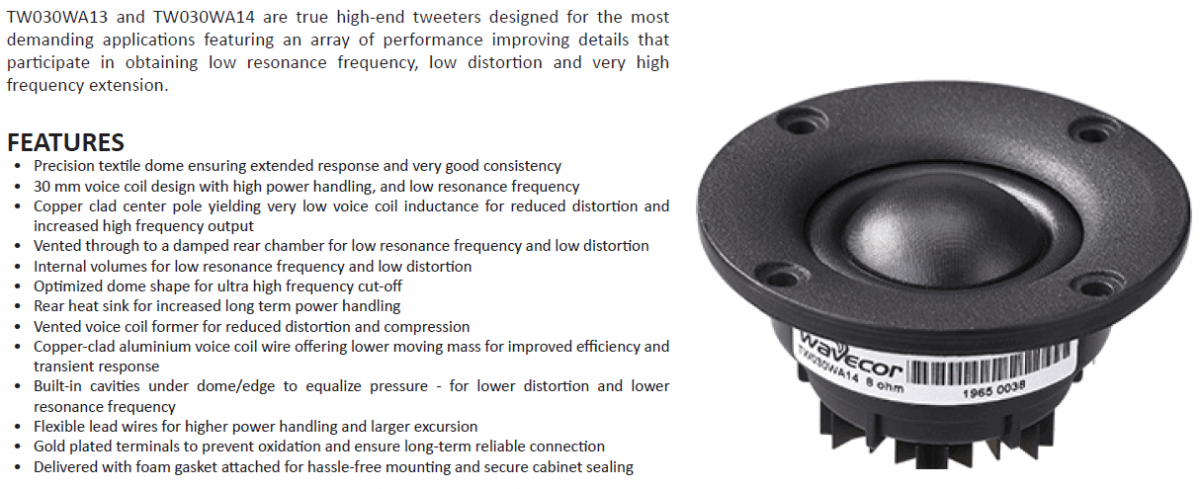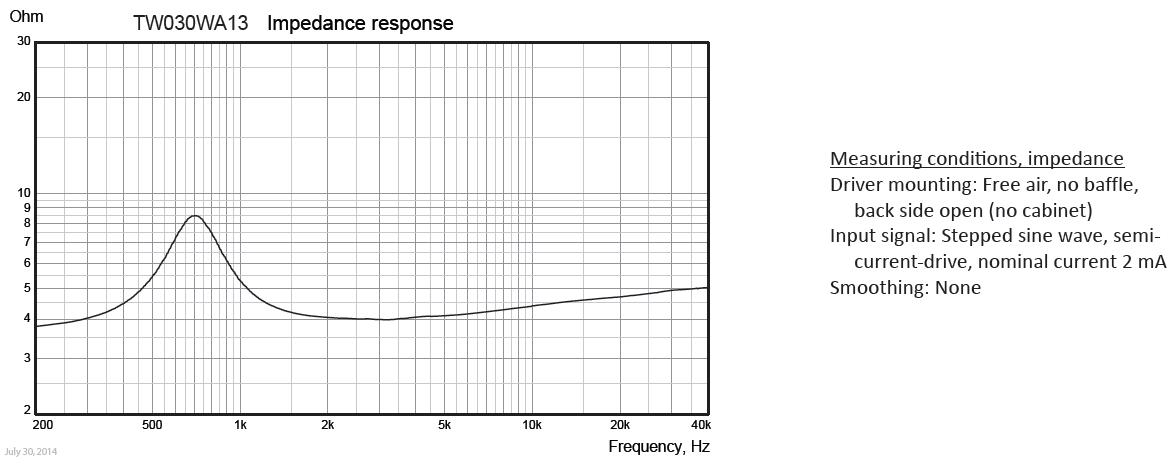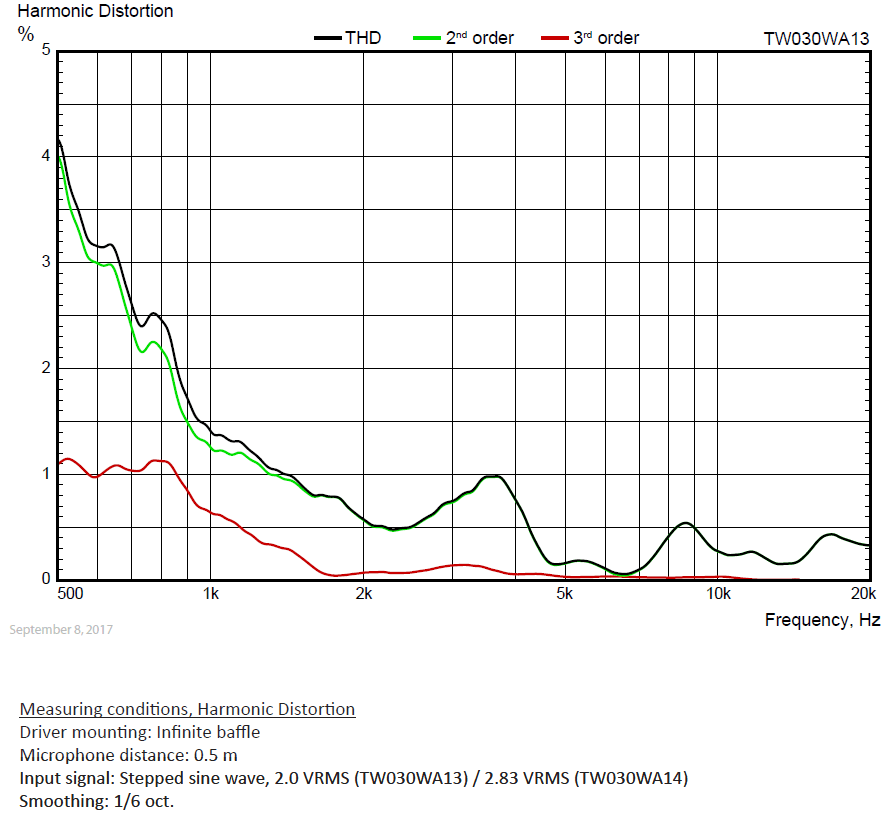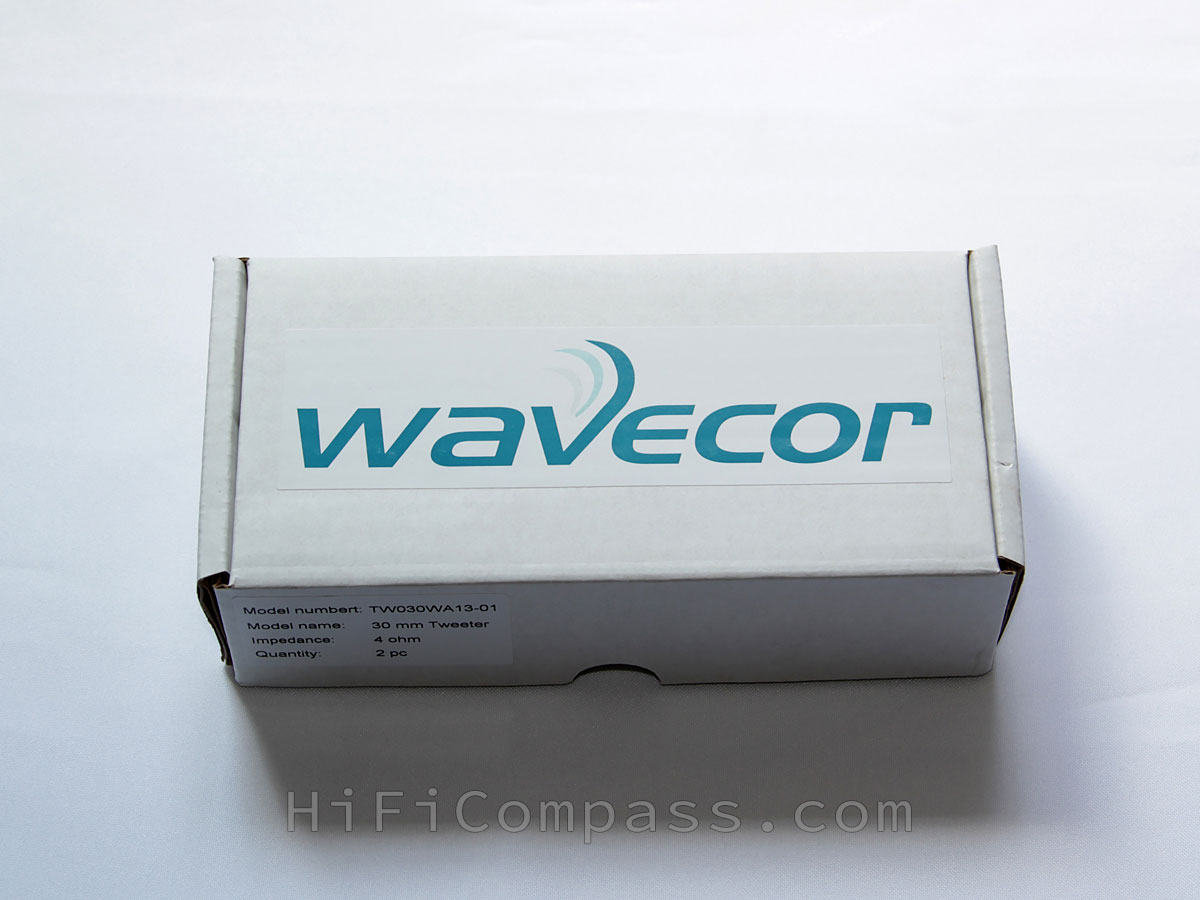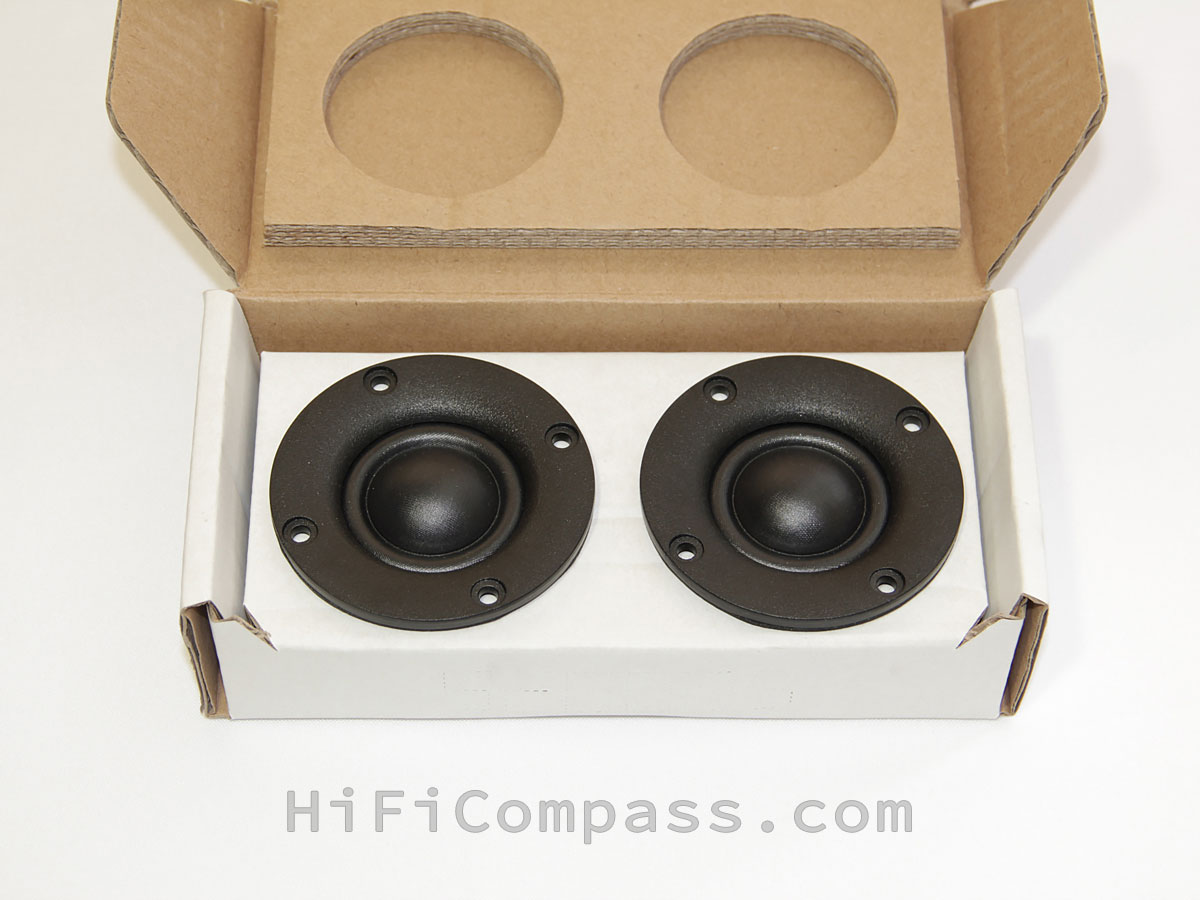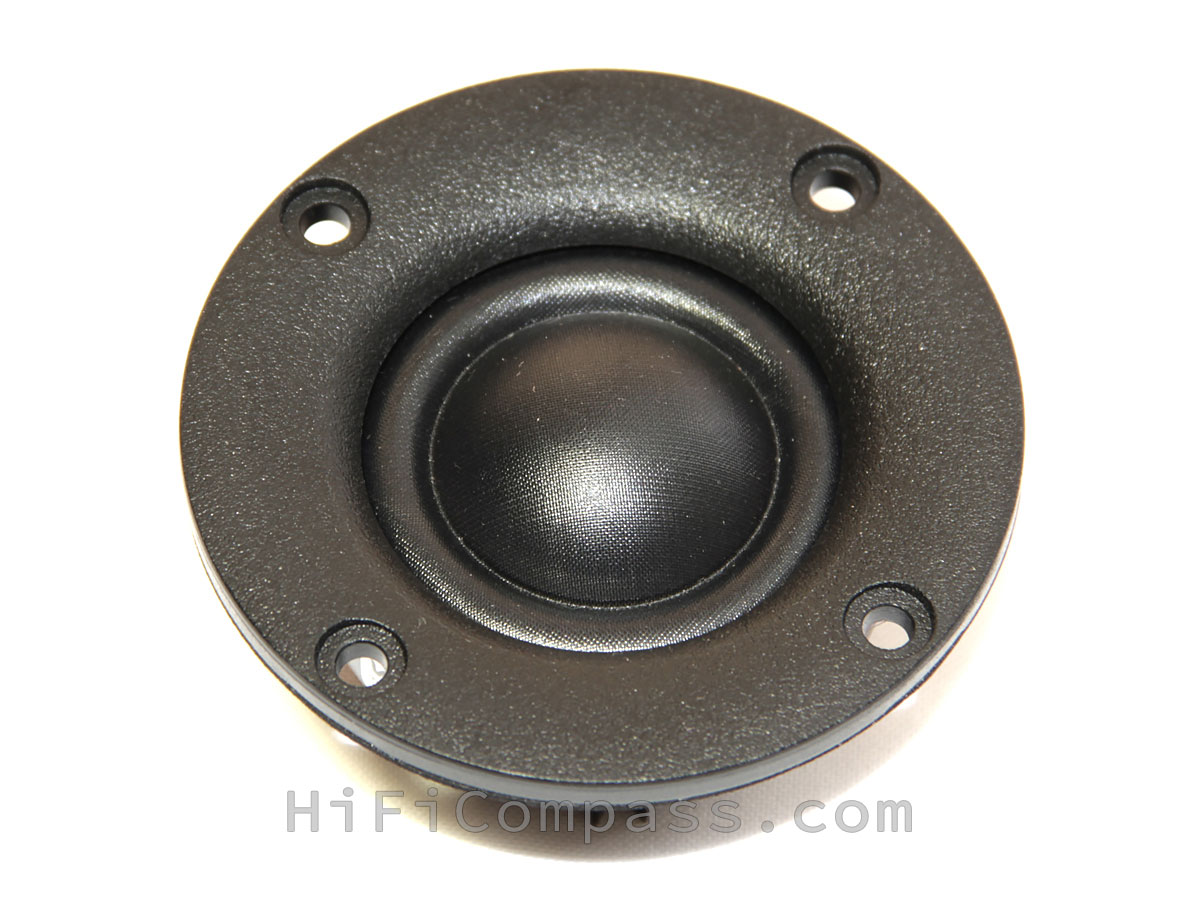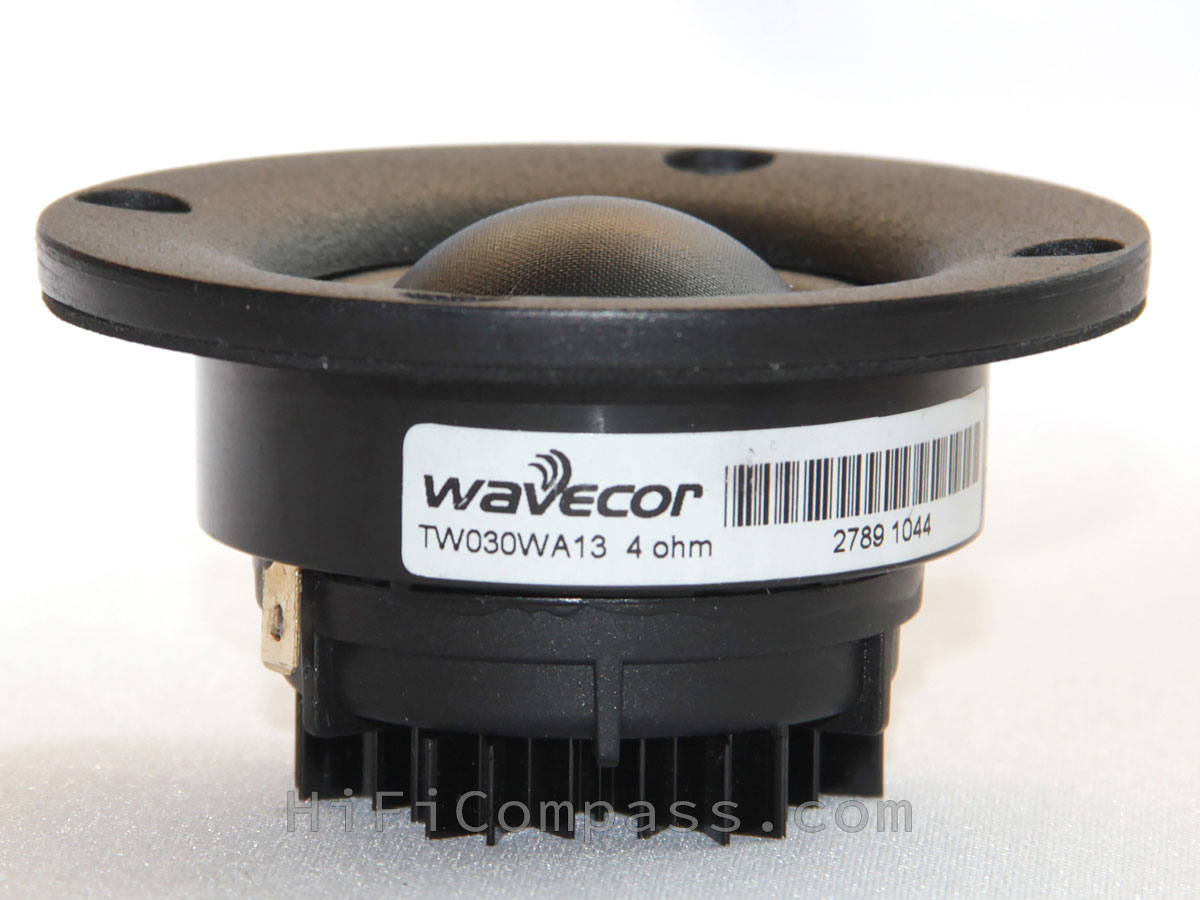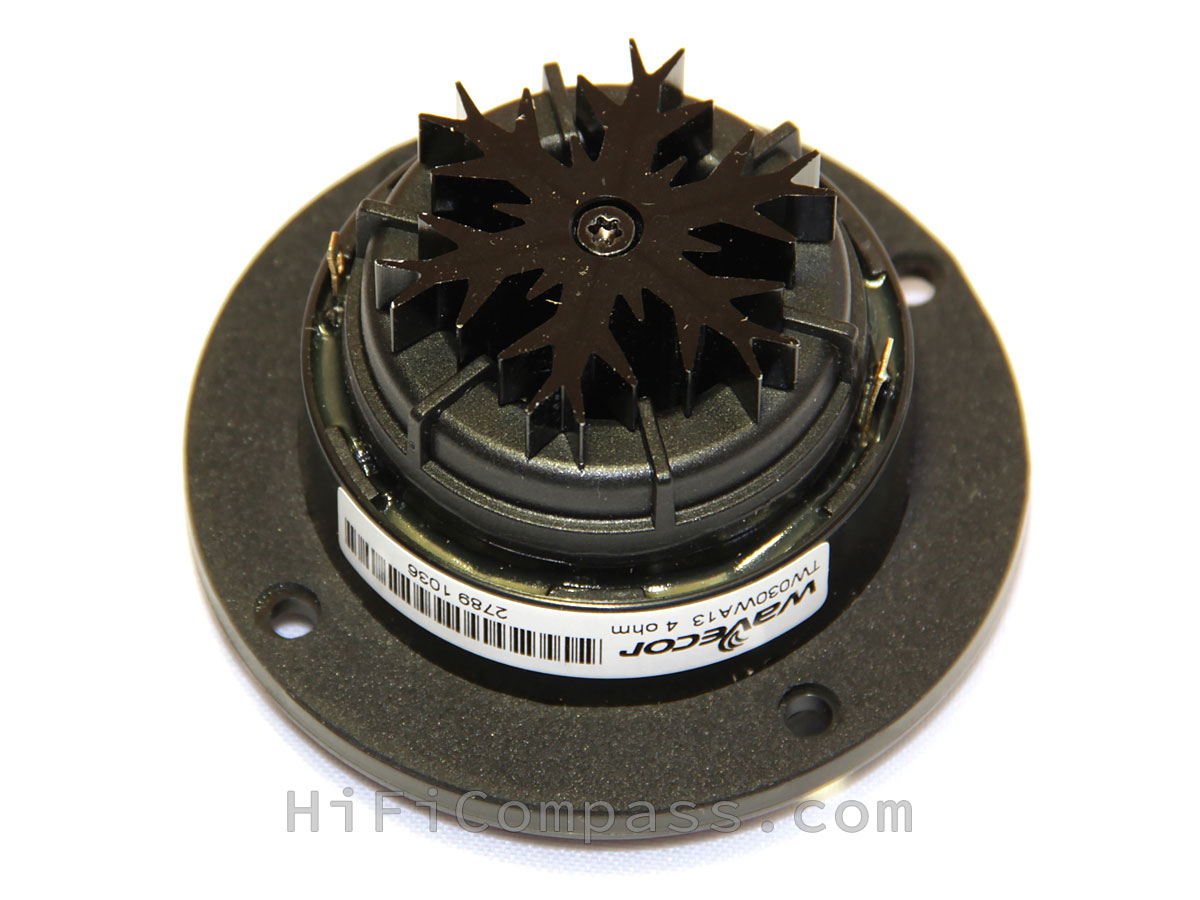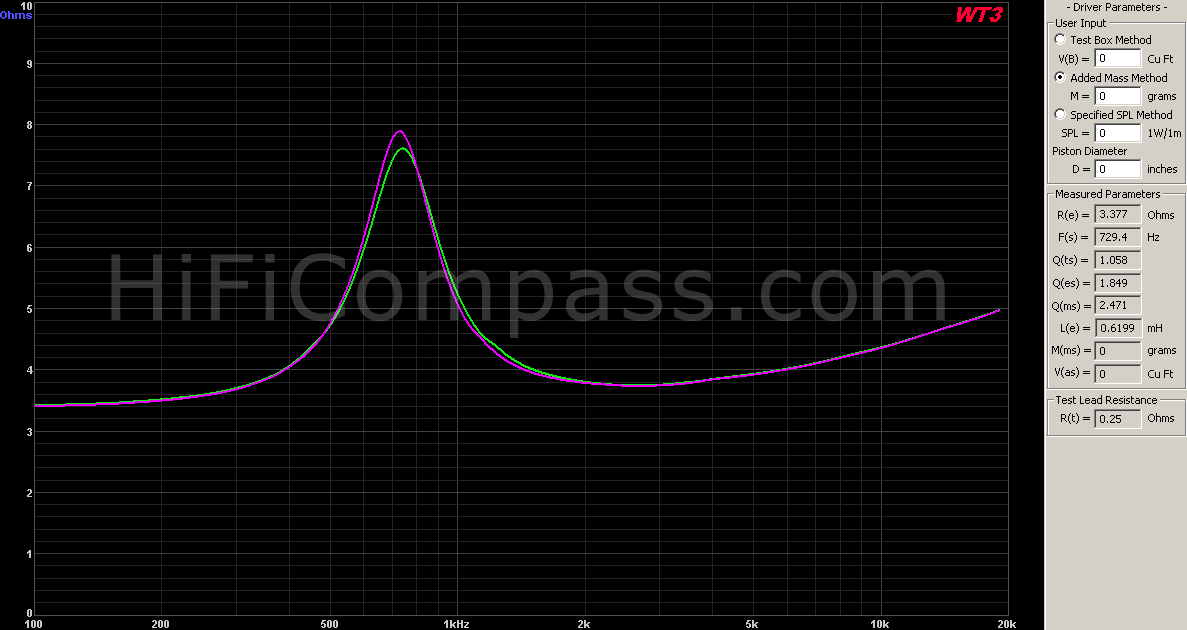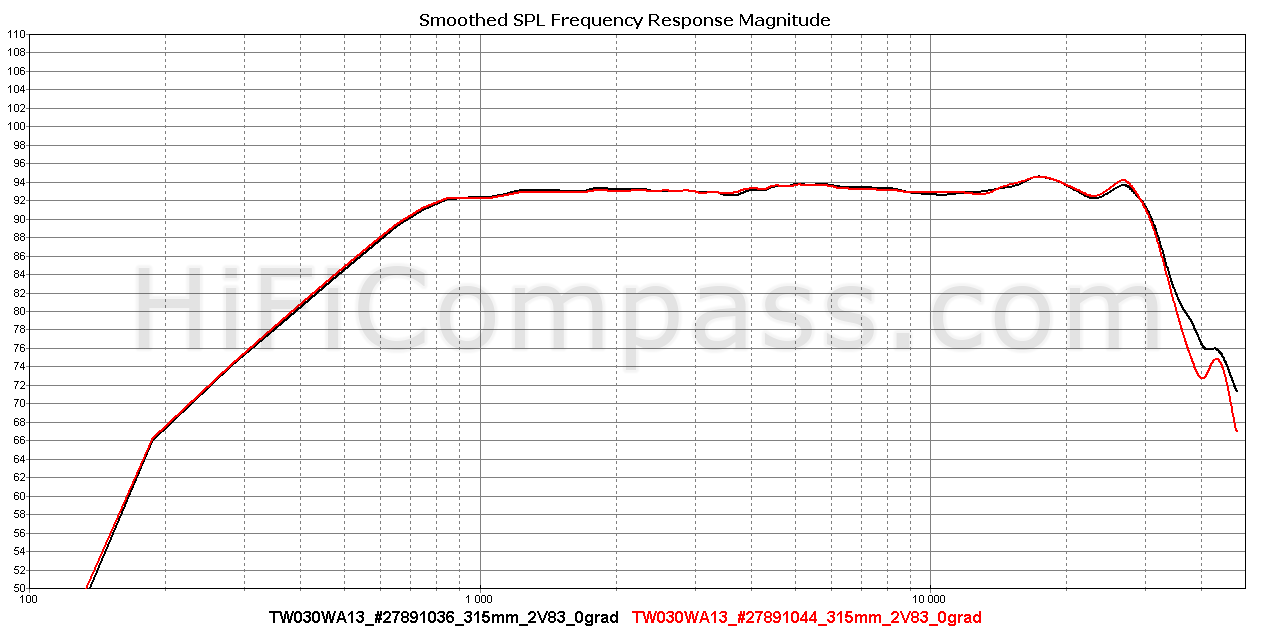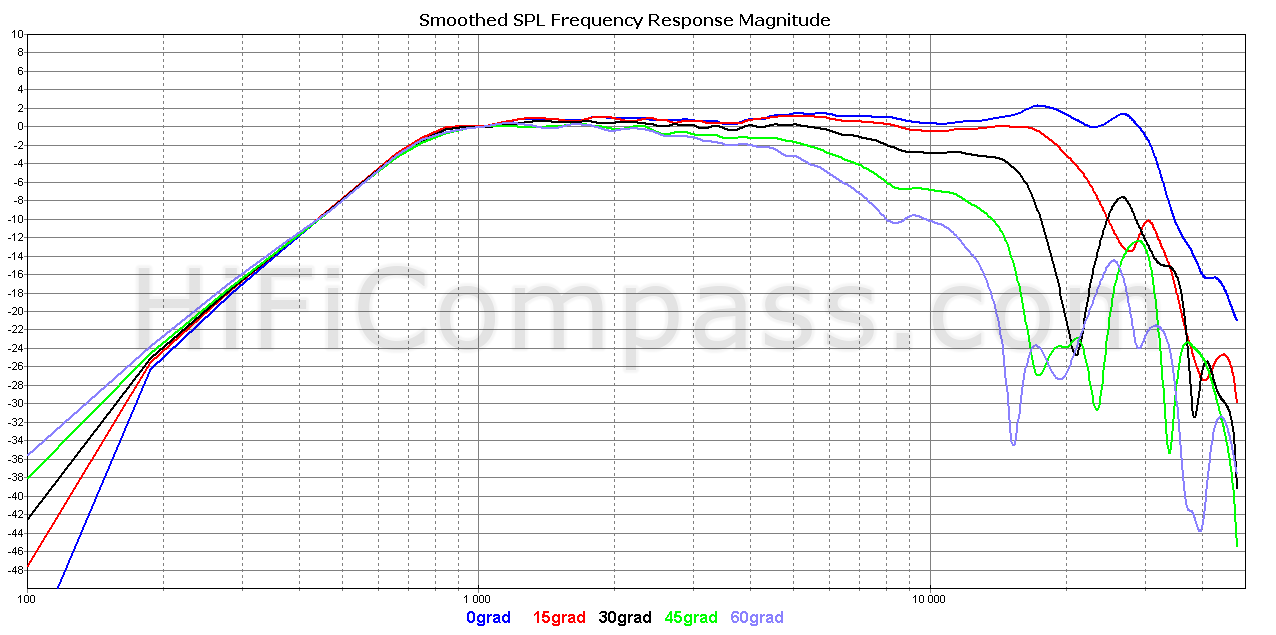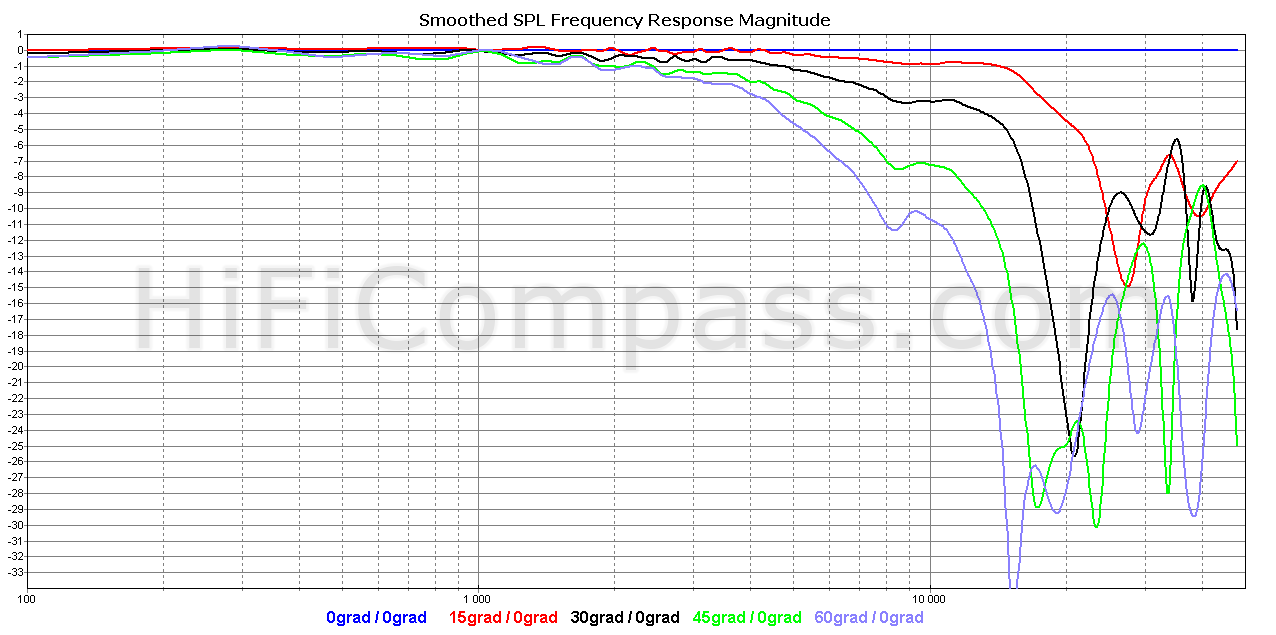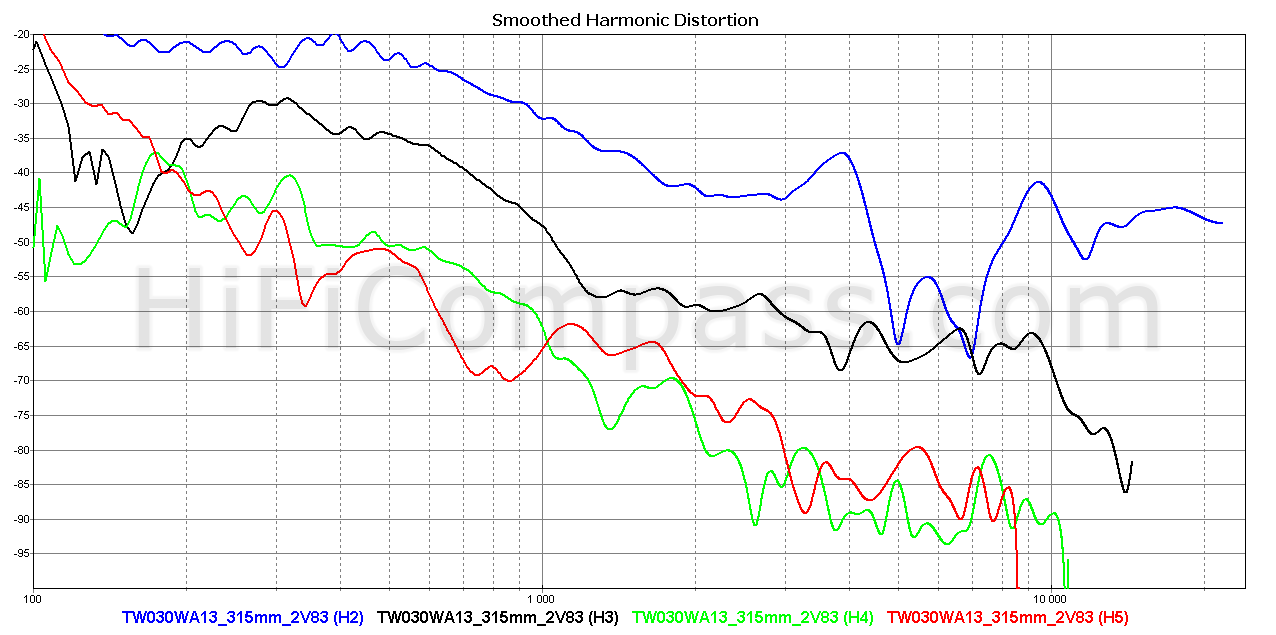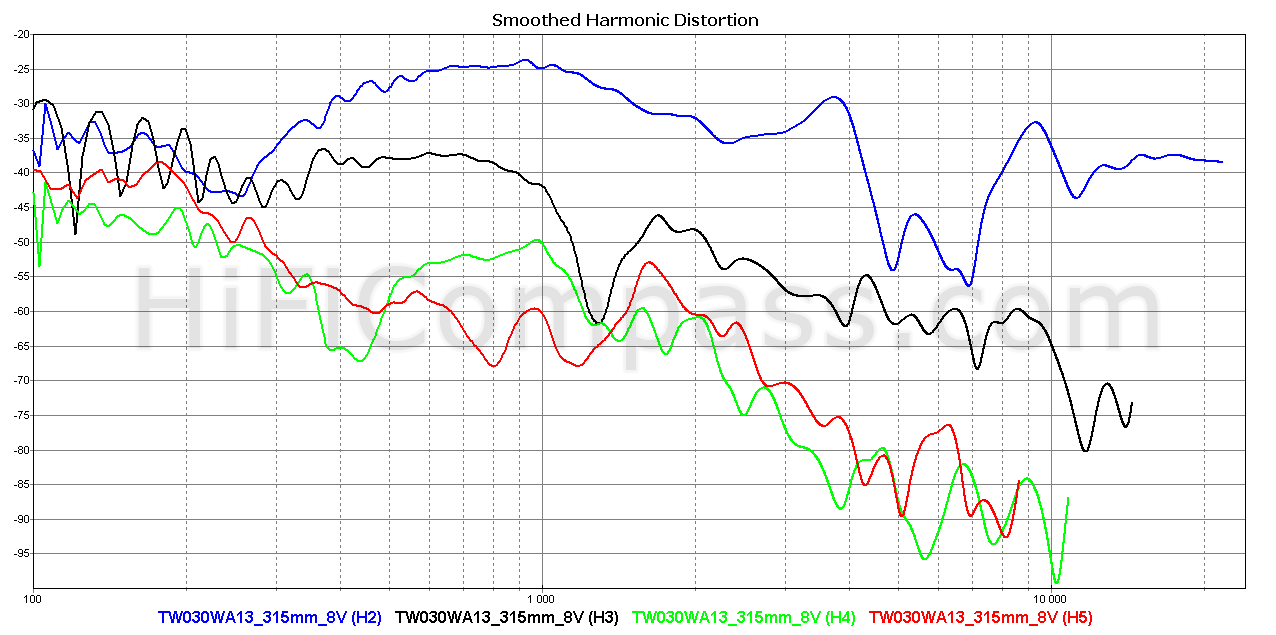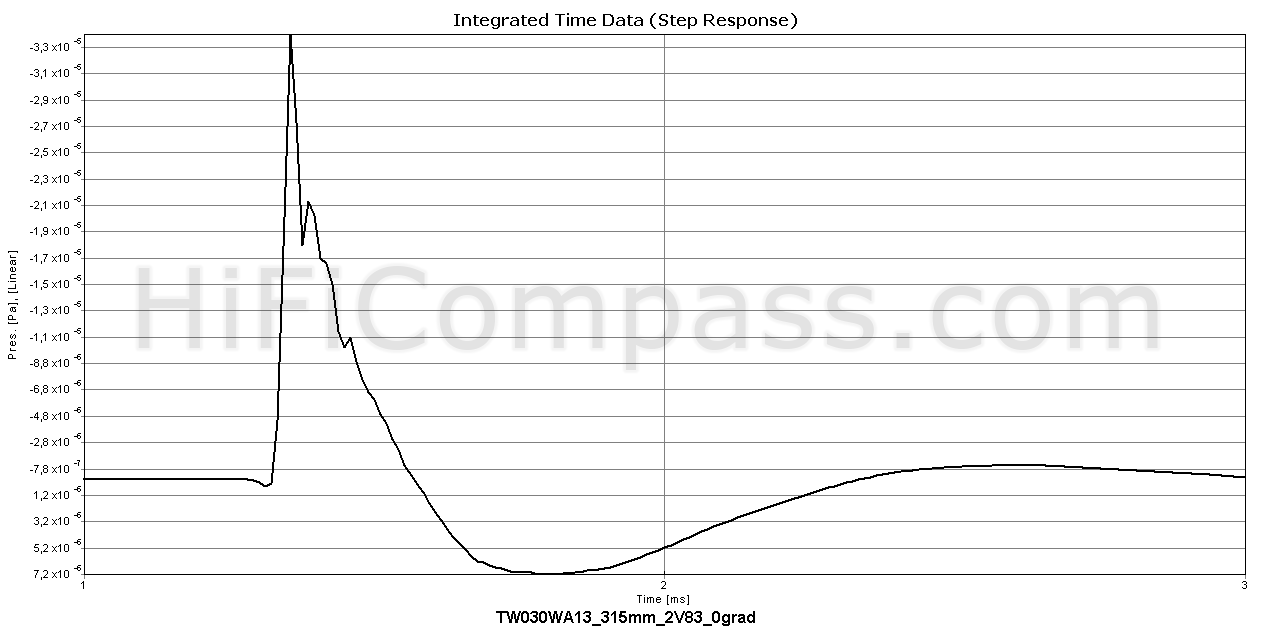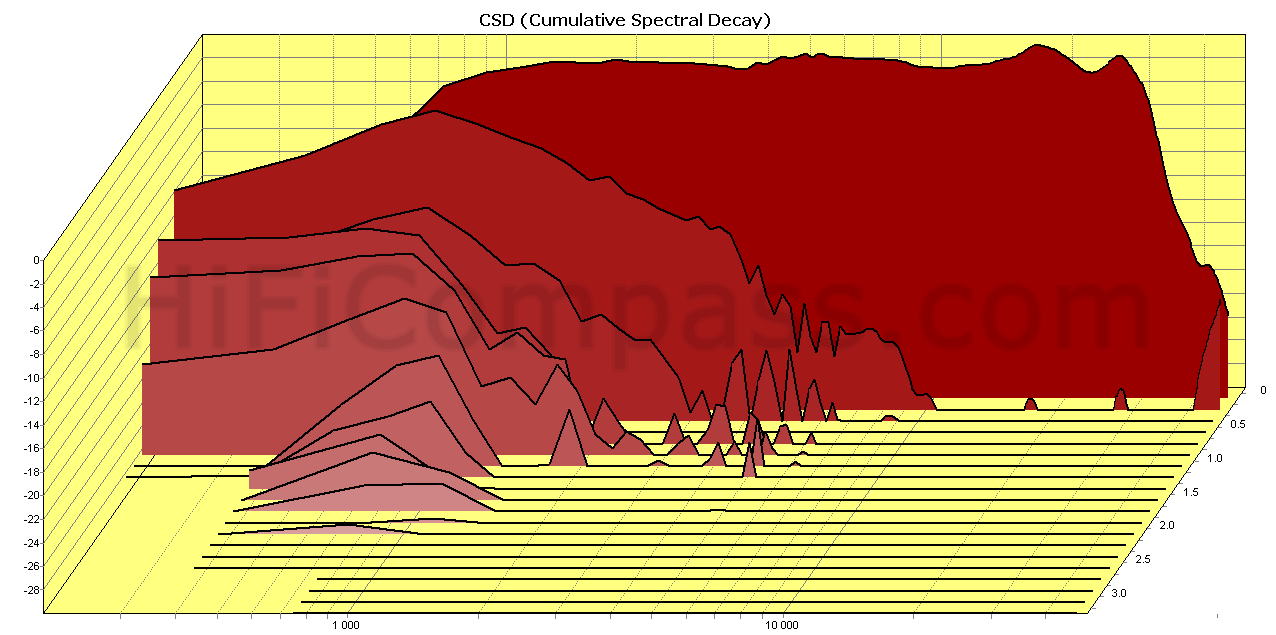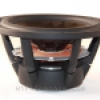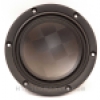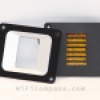HiFiCompass
Wavecor TW030WA13 tweeter
What is on the test bench?
Today we are getting familiar with TW030WA13 model - one of the top range Wavecor company tweeters.
TW030WA13 is a compact 4 Ohm tweeter (its 8 Ohm version is TW030WA14) featuring a quite large fabric dome membrane with a diameter of 30 mm, neodymium magnet and back chamber for low resonance frequency. Wavecor company positions this model as a High-End class tweeter.
After a little digging in the web we have discovered appearing of this tweeter in the products of such companies as Totem Acoustic Inc. (Canada):
- https://totemacoustic.com/en/sky
- https://totemacoustic.com/en/tribe-tower
- https://totemacoustic.com/en/sky-tower
You can get familiar with the Wavecor company history here.
Why do we test this?
The speakers of the Wavecor company have been long attracting our attention with its construction, innovate technologies, Danish roots and quite flattering feedback from consumers. However, for some reasons they couldn't reach us. At last, at the Munich exhibition Hi-End Show 2018 we had the opportunity to personally meet at the Wavecor stand with Allan Isaksen, the general manager of the company, and got to touch to the significant part of the Wavecor speaker model range. Allan Isaksen made us the impression of a business and punctual person and kindly agreed to provide several models for independent testing, for what we express our gratitude to him.
What did the manufacturer state?
Let's look in the "passport":
The first to note is a perfectly designed document - a triffle but very pleasurably. We think, taking in account fullness of information, design and convenience of displaying graphic information (correctly selected scales of axes), the Wavecor's datasheets could be serve as a reference for other companies . As many loudspeaker designers, seeking for speaker drivers for their projects, are orienting, first of all, on the official datasheet, then they will not be disappointed here. Moreover, for this model the manufacturer published THD vs Freq. diagram, what happens very rarely.
There is nothing to comment here, the manufacturer's words say for itself.
Of numerical parameters especially should be noted an increased voice coil linear excursion - 0.65 mm and the declaring of additional parameters as Krm, Erm, Kxm and Exm for advanced TSL speaker driver model, that give an oportunity to designers to model a tweeter operation much more precisely. The resonance frequency 690 Hz in conjunction with Qts=1.01 gives very extended frequency response in low end - down to 650-700 Hz by the -3 dB level. Sure, nobody should use a tweeter to a such low frequency but an extended low end helps in joining the tweeter with lower band speaker.
Visual inspection
Each tweeter has an individual part number. The tweeters having "-01" suffix in the part number are supplied each in an individual box. The box of dense cardboard provides very reliable transportation.
We should note absolutely perfect manufacturing quality of the product - no mechanical defects, no scratches, no burrs, perfectly glued label, perfectly aligned foam gasket. Nothing bends and does not creak, the tweeter is felt in the hands, as a single monolithic product. The front flange has a fine texturing and is made of a very hard and strong plastic.
From the back side we can see a black anodized aluminium heatsink. The heatsink is needed as neodymium magnets are much more sensirive to overheating in compare with ferrite ones, so additional measures are needed to improve cooling. Also you can see the annular back chamber, which communicates with the space under the surround through six small holes that could barely be seen through the membrane material.
The measured mounting flange diameter and thickness are turned out to be exactly the same as in the datasheet, therefore, so you can safely trust to datasheet mechanical drawings.
The terminals are gold-plated but slightly clunky. If you plan to connect to them using soldering, then there are no problems, but with knife terminals you need to be more careful.
The ideal quality of manufacturing testifies to a very high production culture and a serious attitude of the company to the quality of its products.
Impedance frequency response
On the diagram you can see impedance frequency responses for two samples - the curves lie each on other so way we can't see one behind the another. The measured resonance frequencies are - 729 and 742 Hz - a liitle bit higher than in the datasheet, and Qts - 1.03 and 1.058 values almost are the same as declared ones. Excellent consistency! The impedance curves are very smooth without any signs of parasitic resonances in the whole frequency range. The low impedance increasing with frequency indicates a very good motor with short-circuiting rings inside the magnetic system.
On-axis frequency response
The measured on-axis magnitude frequency response is very close to the datasheet's one. The frequency response deviation of the average value 93 dB in the frequency range 800 - 30000 Hz (!) doesn't exceed plus/minus 1.5 dB, what is excellent for that size fabric dome tweeter. The measured average sensitivity is about 93 dB - the same as in the datasheet.
The very extended and smooth frequency response suggests a simple dealing with tweeter when designing a crossover.
Off-axis frequency responses
The off-axis curves have a good agreement with the datashet ones and have nothing special. They are very typical for such larg fabric domes. Whatever we say, but curves declining at large angles above 13 kHz is already quite noticeable.
Harmonic distortion (315 mm)
The two above diagrams are for the averaged SPL about 93 and 101 dB and we can characterize the nonlinear distortion as "low". If were not the increased level of the second harmonic, then our rate be higher. Fortunately, the second harmonic is not as "harmful" as the higher orders with which the tweeter is in order. The good motor.
Step response
The step response demonstrates an excellent slew rate due to the very extended top end, and a rapid and smooth decay. Return to the resting state is not so fast, crossing the rest line a couple of times - a consequence of the low resonance frequency and its high Qt value. When used in real systems with the cutoff frequency of 2.5 kHz, you can ignore it. The teeth in the falling part of the curve are determined by the features of the measuring system and in this case are not related to the tweeter.
Waterfall
The waterfall is excellent! We are seeing a very quick response decay at frequencies higher than 2 kHz and no any traces of parasitic resonances can be seen.
Listening impressions
We can tell about our listening impressions only after testing the tweeter in real loudspeakers. Since we have not yet reached this point, we will leave this report for later.
This section will be updated after a real test in loudspeakers.
"How to use" recomendations
We recommend to use this tweeter in 2 or 3-way loudspeakers having 1.8 - 2.5 kHz crossover point frequency. The nonlinear distortion measurements confirm the validity of this choice. Having a such low crossover point you make maximum use of all the potential that this tweeter has. If for some design reasons you want to increase the crossover point frequency, we recommend that you take a look at another model, which has better off-axis behaviour.
What is price and where to purchase?
The average retail price of TW030WA13 tweeter is about 72 EURO (VAT not included).
https://www.hifisound.de/en/Do-it-yourself-Products/TW030WA13-Textile-Tw...
https://solen.ca/products/speakers/home-speakers/tweeters/tw030wa13/
https://www.costruireaudio.com/en/wavecor-tw030wa13-tweeter-4-ohm-30-mm....
https://audio-hi.fi/ru/wavecor_tw030wa13-01-p-984.html
https://www.wilaudio.com/fr/aigu/294-tw022wa05.html
https://www.eltim.eu/index.php?item=wavecor-tw030wa13--30mm-tweeter--fab...
Summary
It can be summarized that the testing confirmed the very close correspondence of the measured parameters with the claimed ones and TW030WA13 can be classified as a top quality segment speaker. The tweeters have the following features:
- high sensitivity
- very smooth and extended frequency response
- middling sound dispersion
- low nonlinear distortion
- low resonance frequency
- large voice coil linear excursion
- can operate down to 1.8 kHz
- perfect manufacturing quality and parameters consistency
- compact size
You can find more measurements of this tweeter here.
One more test from Vance Dickason - https://www.audioxpress.com/article/Test-Bench-Wavecor-TW030WA13-14-Neodymium-Tweeters
Yevgeniy Kozhushko/07.08.2018
CONTACTS
- Ukraine
- (+380) 95 904 7827
- hificompass@gmail.com
LAST NEWS
-
04 Mar 2025
-
25 Feb 2025
-
10 Feb 2025
-
01 Feb 2025
